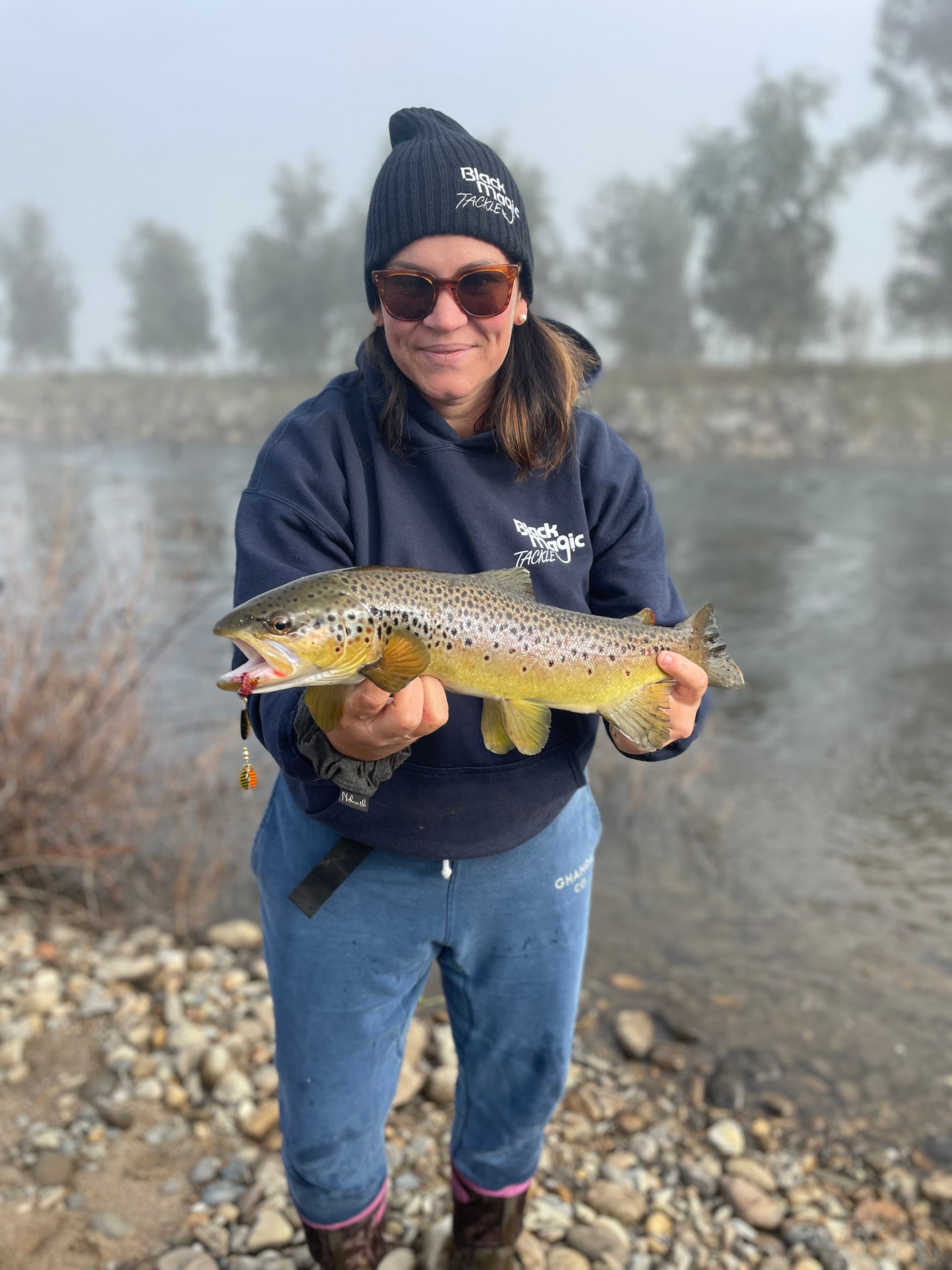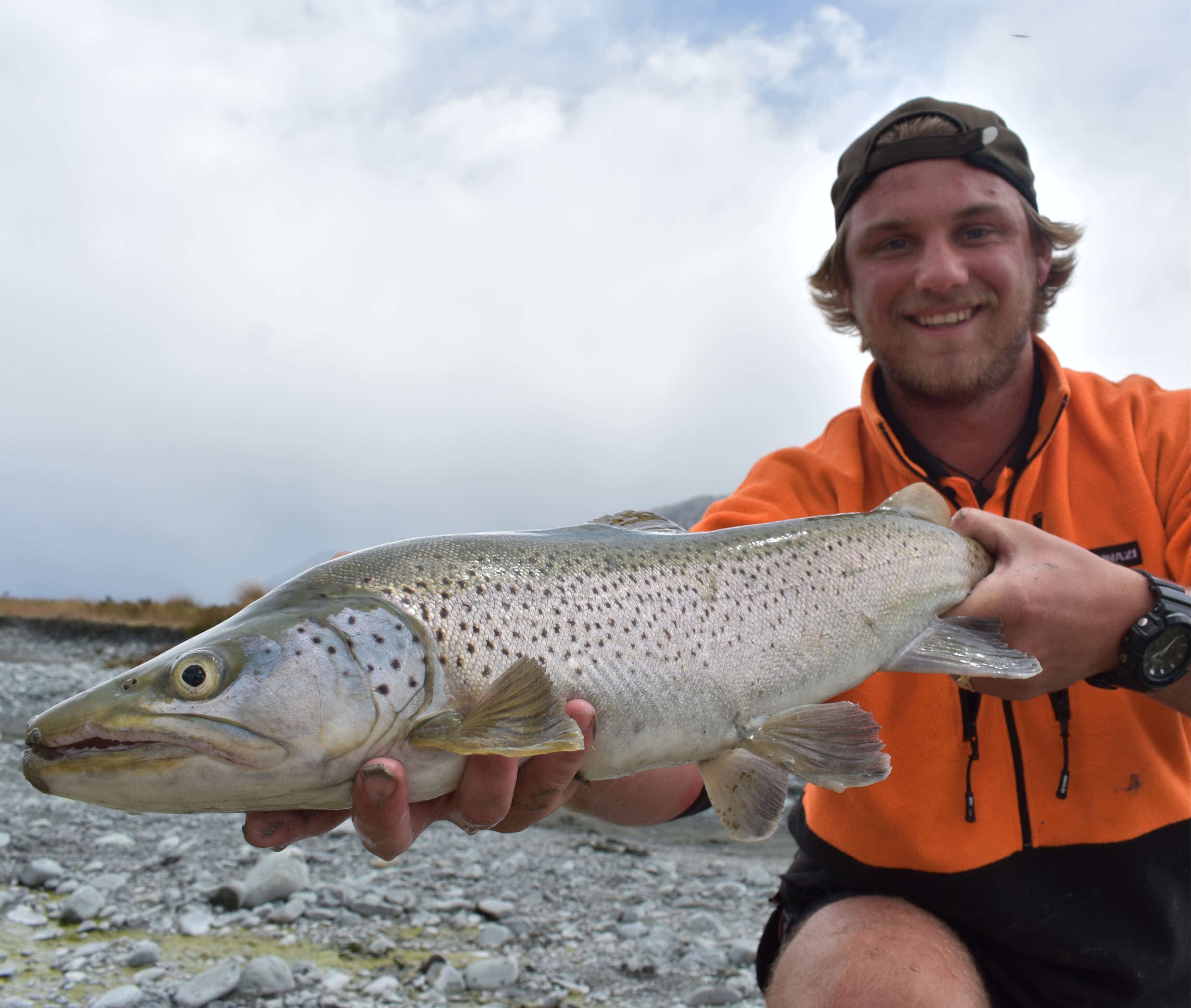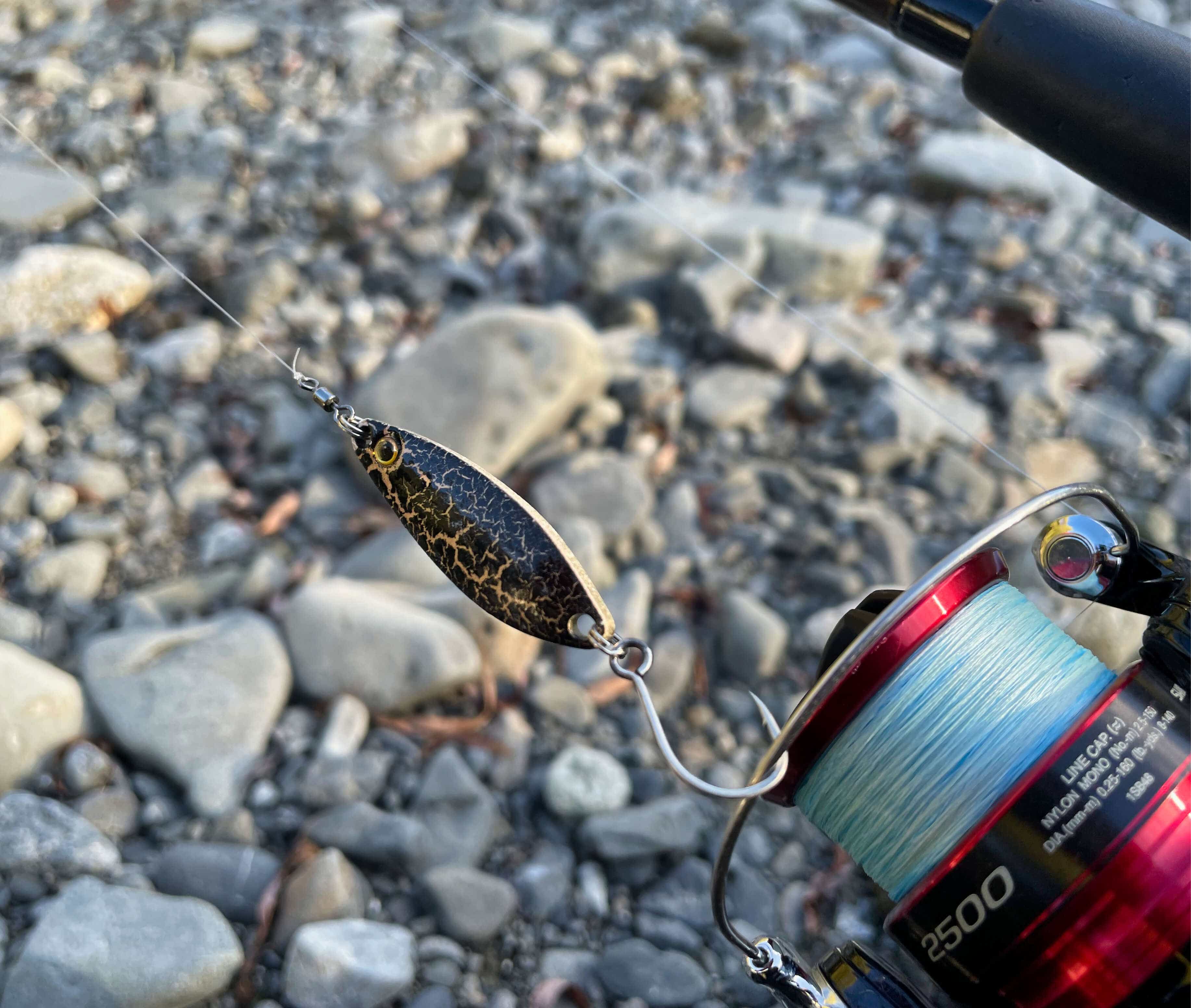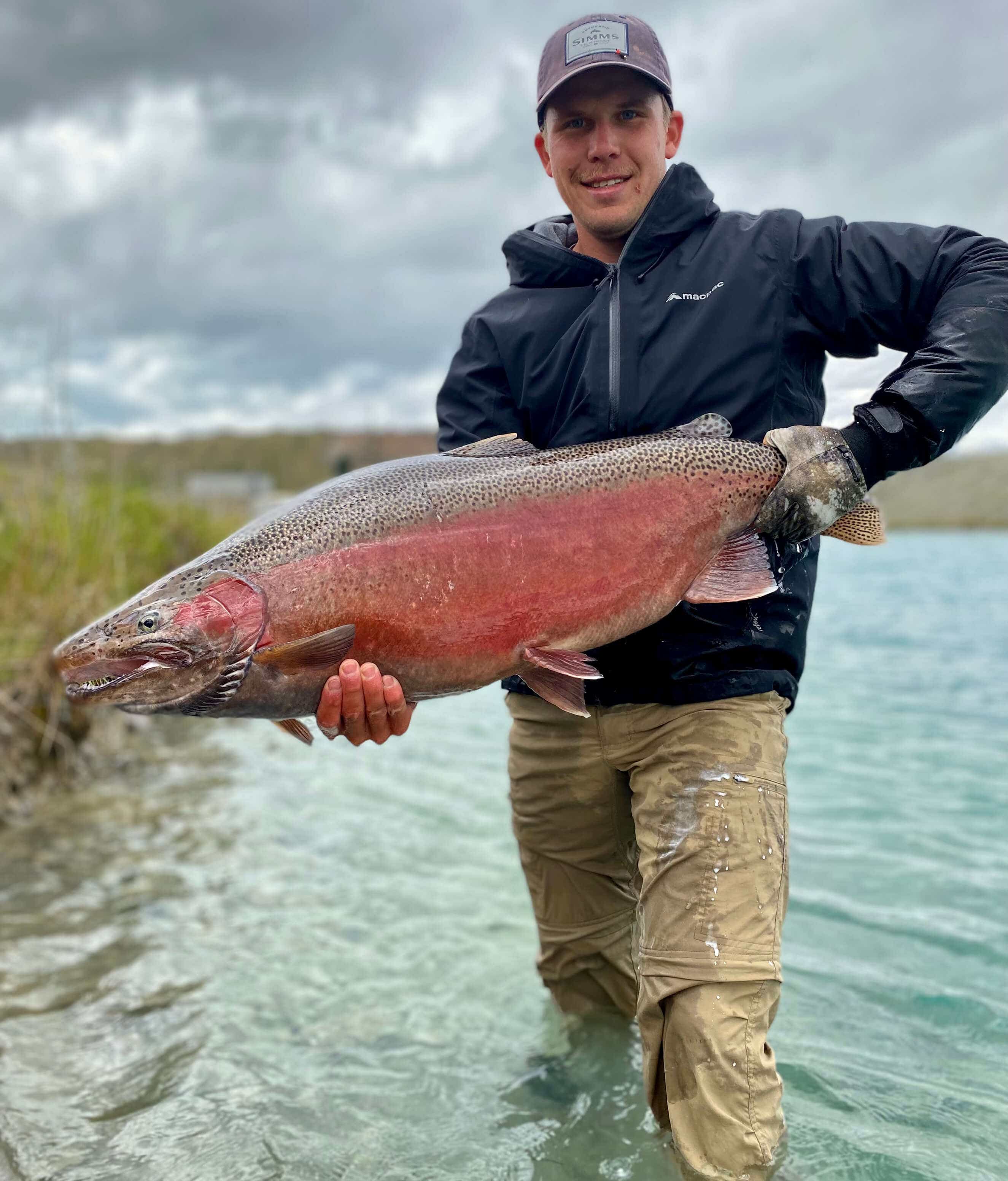Freshwater Fishing - Spinning for Trout
Trout spinning is a past time most kiwis have had the pleasure of doing at some stage in their life, some with success and others not so much. You don't need the flashest gear with most spin rod and reel combos able to do the job, even the smaller kids ones. It is a great way to spend a few hours with the family and a great introduction to fishing for the kids or grandkids. Our mates at Black Magic Tackle have put together a fantastic write up on Spinning for Trout, below is an extract from their article. Read below and follow the links to the full article to find out more.
Gear Set up
A spin rod and reel doesn’t need to cost an arm and a leg, you should be looking for a combo with the best quality that you can afford. Typically sets from $150-$200 have excellent carbon fibre blanks along with light reels featuring smooth drag. That being said, some combos from $50-$99 are more than capable.
Choosing a Trout Spinning Rod
Look for a length of at least 7ft (this is used for increased casting distance and turning power)
Choose a rod with a ‘medium – slow’ action (a slower action rod provides more sensitivity and makes it harder for a fish to shake the hook)
Choose a rod with a guide count of 8 or more (more line guides make the line flow in a direct curve with the rod without any nasty sudden angle changes between guides – this prevents line damage)
Look for a rod with a line rating of 2 – 4kg and lure weight up to 15g (the lighter you go the more bites you will get). Using a line with a 4kg breaking strain means you strike a balance between strength and stealth
Choosing a Trout Spinning Reel
Make sure the reel has smooth drag, don’t worry about max drag rating on the reel as 1-2kg of drag will beat fish up to 10lb, additionally, make sure the line pulls off the reel smoothly without feeling sticky. Almost all trout only require 100m of line to work with, since you usually follow them along the riverbed. To be safe, I always fish with 150m of line just in case I hook something exceptional. A reel should be light and comfortable to fish with all day.
Choosing your mainline, leader and knots
The amount of stress the line goes through is high, for example, when you cast or when you retrieve through a heavy current. You don’t want your favourite lure to snap off and be lost forever. Therefore, the mainline, leader and knots you choose are very important
Braid and Mono
Braid is a great option for your mainline when spinning, as it has more sensitivity than monofilament and casts well which is important for sending a light lure out a long way. Choose a good braid with a line rating of around 8lb-12lb.
If you’re looking for a specialist freshwater casting mono, then the Black Magic Velocity Spin is worth trying. It’s ideal for casting spinners, spoons, and hardbody lures to target your favourite freshwater species. It’s a low stretch, sensitive line which means you’ll be more ‘in touch’ with your fish, giving you better hook ups.








Important Considerations
Treble Hooks
Some parts of New Zealand don’t allow the use of treble hooks when targeting trout. If you’re planning to fish in one of these areas, or are more interested in catch and release, swapping the trebles out for a single inline hook is a great option that won’t impact hook up rates. Make sure you check your local freshwater regulations before you head out fishing.
Food Source
Up to 90% of river trout have a diet of insect larvae. Baitfish make up a small proportion of the total prey that one of these fish will eat throughout its life. When spinning high up in rivers you’re more often trying to spark a predatory reaction from the trout rather than imitating a specific food source.
In the lower reaches of a river when the whitebait are running, fish can become the main prey for trout (especially browns) that ave run out into the ocean. On many lakes, likes Taupo and Rotorua, the prey is often like estuarine areas with 90% of adult fish eating smelt or bullies. In these locations it’s more important to imitate the food source.
Best places to target trout with lures
Choosing the river section is key when using lures. Lower reaches in all river systems have the highest concentration of baitfish. Depending on the season, whitebait, smelt, bullies, and mullet are all in plentiful numbers. Targeting these areas will bring more hits since these fish are more keyed into the prey.
From the estuarine part of the river to a few kilometers upstream is the best place to start with silver, white or grey lures. If the river has some colour, (this is common with estuaries) change to a darker black or brown. Trout love slack water near their food source. Trout cannot keep up with constant flowing water, so they sit just out of the current. Normally this will be near some structure like willow trees or submerged snags. Here are a few different examples of good trout habitats.
Lure Retrieval
The depth or speed of the water should change how you fish a lure. There are a range of factors to go over: sink time, retrieve speed and varying your retrieve.
When I fish a stretch of water, I will work out if it is deep or shallow. If you can see the bottom, quite obviously it is shallower. A blue colour would mean deeper water. When fishing with lures you want to be fishing where the fish are – right on the bottom. Always get your lure down as far as possible.
When fishing in current you should use a heavier weighted lure to suit the conditions, a bibbed lure would also make sense in fast water. You should retrieve the lure at a speed which keeps it low in the water column. If in fast moving water slow your retrieve, the lure will work with the current flowing over it. Trout like a fast retrieve, but it must be slow enough for them to catch the lure.
Different trout like different variations, slowing a retrieve down and then speeding up or putting some jerks into the rod while winding in, even completely stopping and starting is good practice. It all comes down to your own practice and preference. The more time you spend casting the better you will get. Make your first cast count as it will have the best chance of a fish taking your lure.
For the full article, make sure you head over to the Black Magic Tackle website by following the link here: Black Magic Tackle - Spinning for Trout

